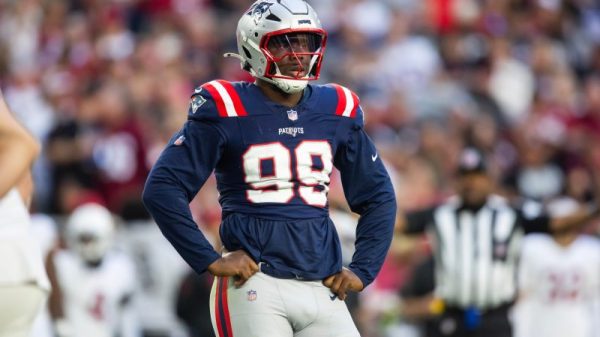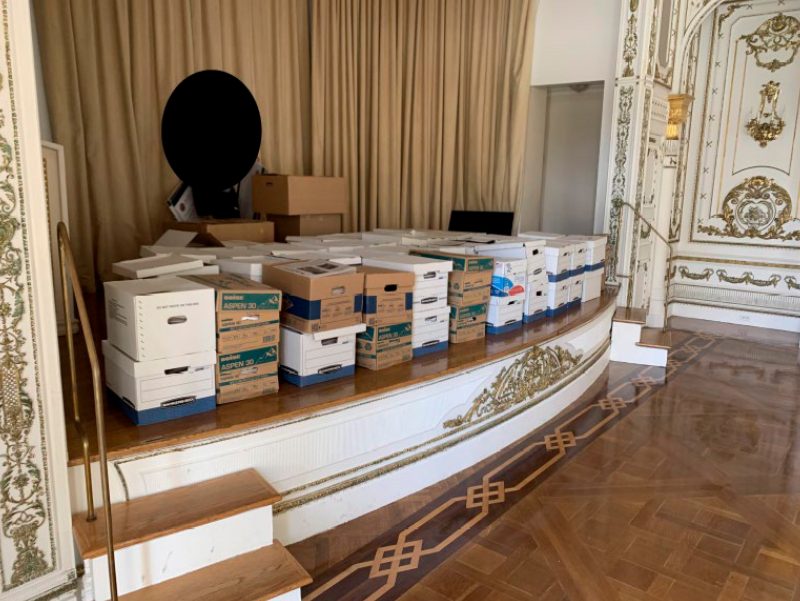As former president Donald Trump prepares for trial on charges that he repeatedly violated government rules for handling classified information, his legal team may get a tactical timing advantage from an unlikely source: government rules for handling such secrets.
Trump’s indictment on dozens of charges, including mishandling classified documents and trying to obstruct investigators’ efforts to recover that material, means his case will be tried under the rules of the Classified Information Procedures Act, or CIPA — a law that could, in theory, delay any trial until after the 2024 presidential election.
Trump, who is leading in the polls for the 2024 Republican presidential nomination, and some of his GOP competitors have slammed the investigation as partisan, suggesting that any one of them may try to force the Justice Department to drop the case if elected.
Passed in 1980, CIPA was designed to fix what government lawyers call the “graymail” problem in national security cases — a tactic in which defendants raise the possibility that damaging classified information could be revealed at trial. In some cases, prosecutors have dropped charges or entire cases rather than risk the disclosure of the very secrets the government was trying to protect.
While the law has enabled the government to pursue cases involving classified documents that it might otherwise drop, it has also meant that these trials legally require more precautions and tend to take more time to get to trial than a typical criminal case.
The law created a series of pretrial steps that must be taken to decide exactly what classified information will be used in court, and how. Lawyers who have worked such cases view the law as a time-consuming and difficult set of procedures that can be extremely beneficial to any defendant seeking to delay a trial.
Special counsel Jack Smith, who is leading the classified-documents case for the Justice Department, has signaled a desire to take the Trump case to trial quickly. But experts say that will be a tall order given the legal requirements for handling classified information — particularly before Judge Aileen M. Cannon, who has little experience with such issues.
For starters, Trump needs at least one lawyer, and probably more than one, with a security clearance to examine the evidence, as he is accused of illegally retaining 31 separate classified documents, some dealing with highly sensitive nuclear and foreign secrets, at his Mar-a-Lago home and private club.
It can take weeks or sometimes months for a defense lawyer without a security clearance to get one, and over the years Trump has proved to be a difficult client, one who frequently hires, fires or sidelines lawyers.
Joshua L. Dratel, a criminal defense attorney who handles national security cases, said the discovery process in cases involving classified materials typically takes much longer than in other types of criminal cases.
During discovery, Trump’s legal team would review the evidence that the government collected during its investigation, including the classified materials. But those classified materials can only be accessed in secure areas called sensitive compartmented information facilities, or SCIFs. For defense lawyers, that typically means a secure facility inside the federal courthouse, where they are prohibited from taking the materials out of the room. If they want to discuss classified material with potential witnesses, that too must be done in a SCIF.
“The preparation of those materials takes an inordinate amount of time. And it may be that the only way you can review the discovery materials is in there,” Dratel said. “You can’t put it on a laptop or read it on a train. There are a lot of limitations on access that extend the process of review.”
Once the defense team has analyzed all the classified materials in the case, Trump’s attorneys will file a sealed document in court describing the classified information they plan to disclose to jurors at trial as part of their efforts to defend the former president against the charges. That could include information contained in documents, portions of documents, testimony or lawyer’s statements to the jury.
Defense lawyers in national security cases have long argued that this part of the CIPA law is unfair to defendants, because it gives prosecutors a detailed road map to the trial defense strategy well before the trial begins, and because so many of the legal debates are kept secret under seal, out of public view.
Prosecutors may object — and often do — to defense plans to reveal classified information. Under CIPA, they can argue at a sealed hearing for substituting the information the defense wants to use with more vaguely worded versions. At that hearing, defense lawyers typically have to show why each contested piece of sensitive information they want to present is relevant to the case, and a judge ultimately rules on the matter. If prosecutors disagree with the judge’s ruling, they can appeal, but the defense team cannot appeal such decisions until after conviction.
For these reasons, prosecutors in national security cases often look for what they call “Goldilocks” documents to use at trial — a reference to the children’s fable of a girl eating porridge that was not too hot nor too cold, but just right.
A Goldilocks classified document is typically one that a jury would recognize as sensitive national security information, but is not so complex that it is hard to understand, nor so potentially damaging that it cannot be exposed or discussed at a public trial.
“They want the document on its own to be a blinking red light that says it should obviously not have been removed,” said David Aaron, a former Justice Department lawyer who prosecuted national security cases. “There’s an effort for prosecutors to identify documents that would be useful as evidence and also wouldn’t require a ton of technical explanation to the jury. They need them to be sensitive, but not too sensitive.”
Aaron said prosecutors and intelligence agencies need to make a decision on how to present as evidence each of the 31 classified materials Trump is accused of illegally retaining. Some of the materials, he said, could be shown to the jury under “the silent witness rule.” Under this rule, classified materials are privately shown to the jury in their entirety, but the details are obscured when presented in the public courtroom.
For example, the jury could be shown an unredacted document that contains a specific country’s military capabilities, but later in the courtroom, lawyers would only refer to the foreign country as “country A.” Some lawyers with CIPA experience refer to this type of evidence as “speaking in code” in front of the jury so that the public — either present in the courtroom or reading news reports from the trial — cannot discern the classified material.
A recent appeals court ruling upheld the silent witness rule, concluding that it could also be used to prevent a defendant from introducing information in the public record if that public information could be used in a “connect the dots” fashion to show what the cloaked classified information is.
Each of these pretrial stages can involve significant litigation over what can and cannot be used, consuming a great deal of time, legal experts said.
Aaron prosecuted the high-profile leak case of Reality Winner, the former National Security Agency contractor sentenced to more than five years in prison for leaking a classified document about Russian interference in the 2016 elections. He said the beginning of the discovery process could focus on nonclassified aspects of the evidence, while Trump’s lawyers await a clearance and classified discovery.
“The documents themselves are classified, but evidence such as the discussions about where they were moved, or the search warrant affidavits, are likely unclassified,” Aaron said. “You cannot defend an entire case without a security clearance, but you can make progress in the case without one.”
While Trump’s status as the first former U.S. president ever charged with a crime makes this case unprecedented, Aaron said the processes and laws at the core of it have long been used in national security cases and trials.
“This is a unique circumstance, this is a unique case, but all the things that we are talking about — the Espionage Act and CIPA — these are all well-established techniques and law,” Aaron said. “This is how the law operates. These are not being made up on the fly.”
Aaron also worked on a case involving a former government contractor, Harold T. Martin III, who was arrested in 2016 on allegations that he took home a huge number of paper and digital copies — the equivalent of 500 million pages — but never shared them with anyone.
Court decisions in the Martin case may prove valuable to the Trump prosecutors, Aaron said. At one point, Martin’s attorneys argued that prosecutors would need to prove that Martin knew that he possessed the specific documents that the government charged him with having in order to convict him. Prosecutors, however, argued that they only needed to prove that Martin knew he was wrongfully in possession of classified documents.
Ultimately, the judge sided with the government, and Martin pleaded guilty more than two years after his arrest. He was sentenced to nine years in prison.



























